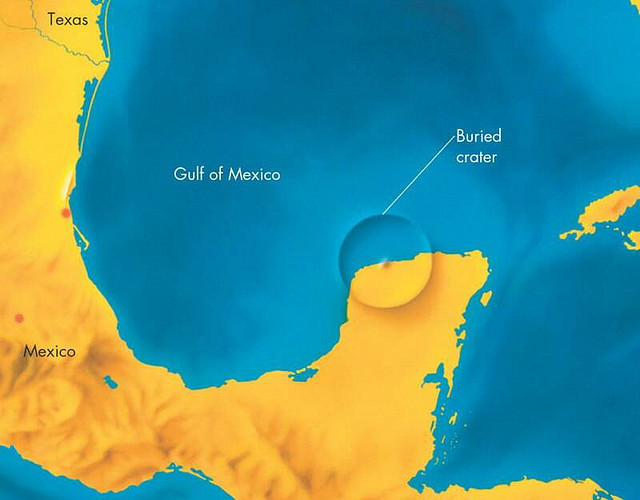Our Environment Contents
1. Evolution
Approximately 66 million years ago, there was a mass extinction event known as the Cretaceous-Paleogene extinction event. This wave of extinctions included the extinction of the dinosaurs. This point in the fossil record is known as the K-Pg boundary, and several different explanations for its cause have been offered.
Meteorite impact theory (named the Alvarez impact hypothesis after the man who discovered evidence for it) is currently the favoured explanation for this mass extinction. Different explanations have strong advocates and supporting empirical evidence, but as with many events in the history of life, it is not possible to say definitively which theory is true, or whether a combination of various causes may have been in play.
Throughout the world iridium is found in continental shelf sediments in unexpectedly high concentrations. One source of iridium is from meteorites, and this high concentration has been put forward as supporting evidence for a large impact at about the time of the K-Pg Boundary 66 million years ago. Models suggest that for iridium to be spread in this way, a meteorite 10 km in diameter must have impacted with the Earth. This would have made a crater 100 km across.
Meteorite impact is known to shock quartz grains. Many samples of shocked quartz have been found in the strata from 66 million years ago, especially in North America. This suggests that the meteorite impacted somewhere near North America. In 1990 a likely site of the crater was discovered at Chicxulub on the Yucatan Peninsula, South Eastern Mexico. The Chicxulub crater has an average diameter of 180km, which is about the size calculated by Alvarez in his hypothesis Although buried under hundreds of metres of sediment, the crater has been dated to about 66 million years. The impact also produced great tidal waves, the evidence for which can be seen around the Caribbean and south coast of the USA.

The K-Pg event had a huge impact on the evolution of life on Earth, removing many species but allowing others to flourish and diversify. The extinction of the dinosaurs allowed mammals to become established as a dominant group, evolving rapidly to fill the now-vacant evolutionary niches.
What are the main principles of the meteorite impact theory?